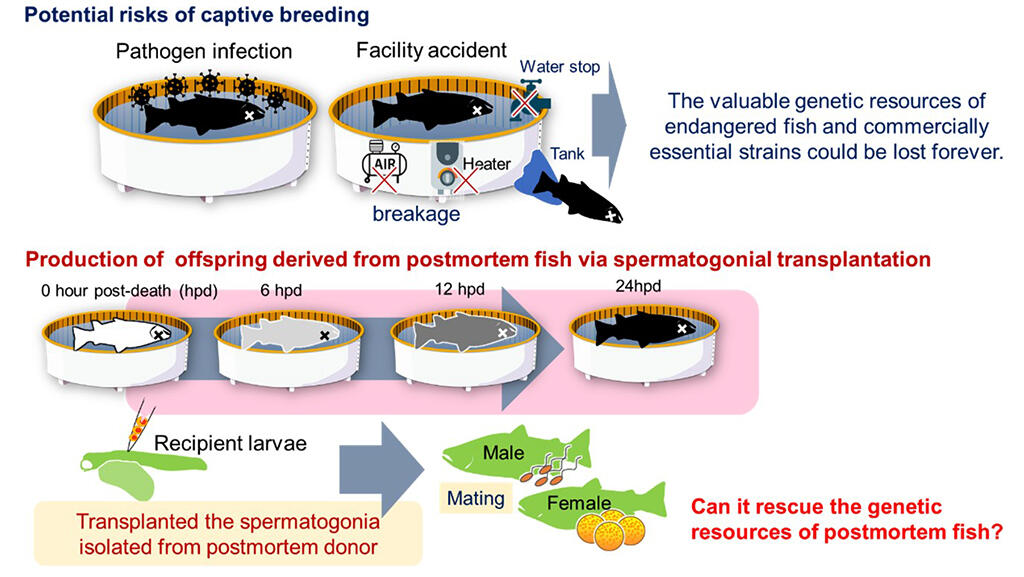A research group led by Assistant Professor Kensuke Ichida of the Institute for Reproductive Biotechnology for Aquatic Species, Tokyo University of Marine Science and Technology, has confirmed that it is possible to produce offspring from dead rainbow trout. The method involves isolating germ cells from a dead trout 12 to 24 hours after death and transplanting them into another individual. It is expected to help preserve the genetic resources of valuable fish species that have died due to power outages or equipment problems. The results were published in the April 15 issue of Aquaculture, an international scientific journal.

Provided by Tokyo University of Marine Science and Technology
Accidents such as power outages and equipment trouble at aquaculture farms and aquariums can result in the loss of valuable fish species. These accidents often occur at night when patrols are less frequent. Dead individuals left as-is for long periods, such as until the morning, were previously thought to be unable to pass on their genetic resources due to cellular degradation caused by protein breakdown by enzymes and other internal factors.
In the past, the university has lost valuable strains and experimental fish it has produced due to power outages, so there has been a need for a technique that can revive these fish. The university had also succeeded in developing a surrogate parent fish technique in which fish germ cells are extracted and transplanted into surrogate parent fish to produce eggs and sperm derived from these cells and produce offspring. The university also developed techniques for cryopreserving and culturing germ cells.
In the experiment, the research group applied these techniques to revive fish that had died in accidents such as power outages. Live germ cells were isolated from rainbow trout 12 to 24 hours postmortem and transplanted into the abdominal cavity of another newly hatched juvenile rainbow trout (surrogate parent fish).
It was observed that even 12 hours after death, the cells were successfully taken into the ovaries or testes of the surrogate parent fish and subsequently multiplied and differentiated into eggs and sperm. At 10.5°C, transplant efficiency was high, with no difference between fresh postmortem and 12 hours postmortem. After that, the transplantation efficiency decreased with time, but even at 24 hours postmortem, proliferation and differentiation of germinal stem cells derived from the transplanted individuals were confirmed.
The technique is expected to apply to fish species other than rainbow trout and is expected to be used as a way of backing up genetic resources from rare fish. However, research is needed for application, as ideal environmental water temperatures and degradation rates vary among fish species.
Professor Ichida said, "Now that we know that postmortem fish germ cells can be used for transplantation, we would like to investigate whether they can be used for cryopreservation and culture techniques using the same method. By refining these techniques, we believe that they will see practical use in the field."
This article has been translated by JST with permission from The Science News Ltd.(https://sci-news.co.jp/). Unauthorized reproduction of the article and photographs is prohibited.




